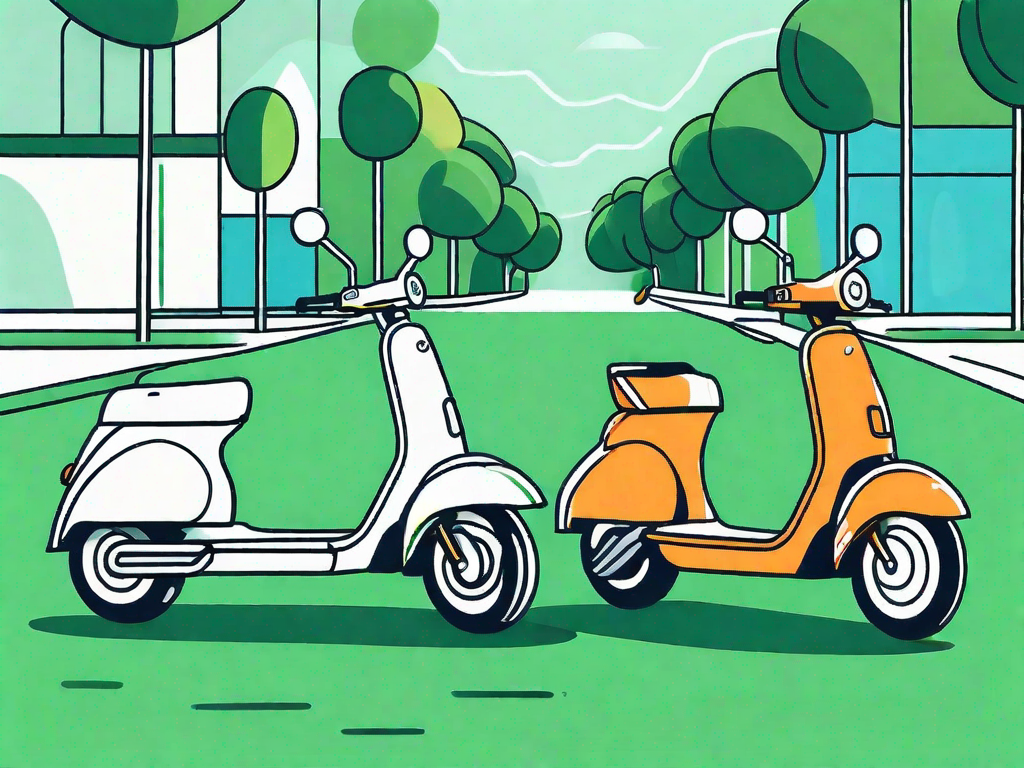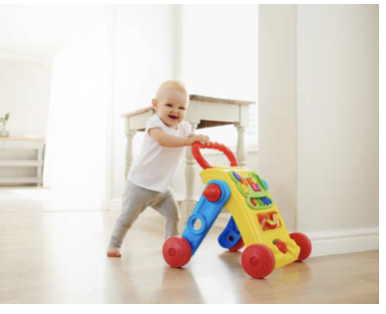Kids’ scooters can be a fun and exciting way for children to explore their surroundings and develop their balance and coordination skills. However, with so many options available, it can be challenging for parents to decide between two-wheel and three-wheel scooters for their kids. In this article, we will delve into the basics of kids’ scooters and discuss the key factors to consider when making this important decision.
Understanding the Basics of Kids’ Scooters
Before we dive into the debate between two wheels and three wheels, let’s first understand the importance of choosing the right scooter for your child. A well-chosen scooter can provide countless hours of entertainment while also being a great means of transportation.
But what makes a scooter the right choice for your child? Safety should always be a top priority when selecting a scooter. It’s crucial to ensure that the scooter is age-appropriate and meets the necessary safety standards. This means checking for features such as sturdy construction and durable materials that can withstand the wear and tear of regular use.
However, safety goes beyond just the scooter’s build. It’s also important to consider your child’s physical abilities and level of experience with scooters. Choosing a scooter that matches their skill level can help avoid unnecessary accidents and injuries. For younger children or beginners, a scooter with a lower maximum speed and easier maneuverability may be more suitable.
The Importance of Choosing the Right Scooter
When it comes to choosing the right scooter, there are a few key factors to keep in mind. One of the most important considerations is the scooter’s size and weight capacity. It’s essential to select a scooter that can comfortably accommodate your child’s size and weight to ensure a safe and enjoyable riding experience.
Another important feature to look for is adjustable handlebars. Children grow quickly, and having handlebars that can be adjusted to their height ensures that the scooter can be used for an extended period. This not only saves you money in the long run but also allows your child to ride comfortably without straining their back or arms.
Additionally, a reliable braking system is crucial for your child’s safety. Look for scooters with brakes that are easy to operate and provide sufficient stopping power. This will give your child the confidence to ride without worrying about sudden stops or difficulties in controlling their speed.
Furthermore, a non-slip deck is an important feature to consider. This provides your child with a stable platform to stand on, even in wet or slippery conditions. A non-slip deck not only enhances safety but also ensures a comfortable and secure riding experience for your child.
Key Features to Look for in a Kids’ Scooter
When browsing through the options, there are a few more key features you should consider. Look for scooters with a lightweight design, as this makes them easier for your child to handle and maneuver. A lightweight scooter also allows for effortless transportation, whether it’s carrying it to the park or storing it in the car.
Another feature to consider is the scooter’s folding mechanism. Some scooters offer a convenient folding design that allows for easy storage and transportation. This is especially useful if you plan on taking the scooter on family outings or trips.
Lastly, consider the overall design and aesthetics of the scooter. While safety and functionality are paramount, a scooter that your child finds visually appealing can enhance their excitement and enjoyment. Look for scooters with fun colors, patterns, or character themes that resonate with your child’s interests and personality.
Two-Wheel Scooters for Kids
Two-wheel scooters have long been a popular choice among kids and their parents. These scooters offer a more traditional and challenging riding experience that can help improve a child’s balance and coordination skills.
Benefits of Two-Wheel Scooters
Two-wheel scooters require more balance and control from the rider, which can help children develop a stronger sense of equilibrium. Riding a two-wheel scooter also promotes a deeper level of engagement and concentration, as riders need to pay close attention to their movements.
Potential Challenges with Two-Wheel Scooters
While two-wheel scooters offer numerous benefits, they may not be suitable for all children. Younger kids or those who are less confident in their balance may find it challenging to ride a two-wheel scooter at first. It requires practice and patience to master the necessary skills for a smooth and safe ride.
Three-Wheel Scooters for Kids
Three-wheel scooters, also known as trikes, have gained popularity in recent years due to their stability and ease of use. These scooters are particularly suitable for younger children who are just starting their scooter-riding journey.
Advantages of Three-Wheel Scooters
One significant advantage of three-wheel scooters is their enhanced stability compared to two-wheel models. The presence of an extra wheel provides additional support, allowing children to ride with less fear of toppling over. Three-wheel scooters are also relatively easier to maneuver, making them a great option for younger kids.
Possible Drawbacks of Three-Wheel Scooters
While three-wheel scooters offer stability and ease of use, they may not provide the same challenge and engagement as their two-wheel counterparts. As children become more comfortable with scooter riding, they may outgrow the stability that three-wheel scooters offer and seek a more thrilling experience.
Safety Considerations for Kids’ Scooters
Regardless of whether you choose a two-wheel or three-wheel scooter, it’s essential to prioritize safety at all times. Investing in the right safety gear and teaching your child proper scooter etiquette will contribute to a safe and enjoyable riding experience.
Essential Safety Gear for Scooter Riding
A well-fitted helmet should always be worn when riding a scooter to protect your child’s head in case of a fall or collision. Elbow and knee pads can also provide additional protection against injuries. Encourage your child to wear closed-toe shoes to prevent foot injuries, and consider reflective clothing or accessories for enhanced visibility, especially during low-light conditions.
Tips for Safe Scooter Use
Teach your child the importance of using hand signals and looking out for pedestrians and other vehicles while riding their scooter. Establish clear rules about where they can ride, such as avoiding busy roads and staying within designated areas. Regularly inspect the scooter for any signs of wear or damage and encourage your child to report any issues to you.
Making the Final Decision: Two Wheels or Three?
When it comes to deciding between two-wheel and three-wheel scooters for your child, several factors come into play.
Factors to Consider When Choosing
Consider your child’s age, level of physical development, and experience with riding scooters. Younger kids may benefit from the added stability of a three-wheel scooter, while older children may prefer the challenge of a two-wheel option. Additionally, take into account your child’s personal preferences and interests when making the final decision.
Recommendations for Different Age Groups
– For toddlers and preschoolers (ages 2-4), three-wheel scooters are highly recommended due to their stability and ease of control.
– For kids aged 5-8, both two-wheel and three-wheel scooters are viable options, depending on their individual skills and preferences.
– For older kids (8 and above) who are confident in their balance and coordination abilities, two-wheel scooters may provide a more thrilling and engaging experience.
In conclusion, the choice between two wheels and three wheels ultimately depends on various factors, including your child’s age, skills, and preferences. Both options have their advantages and considerations, and it’s crucial to weigh them carefully before making your final decision. Remember, safety should always be the top priority, regardless of the type of scooter you choose for your child. Happy scooting!


